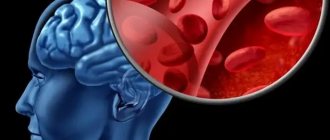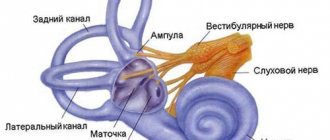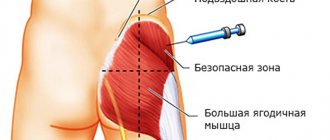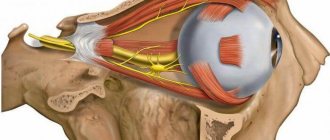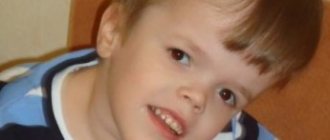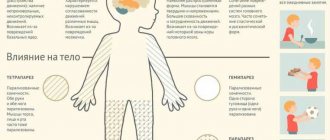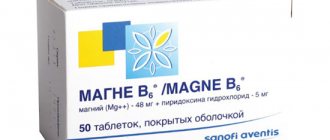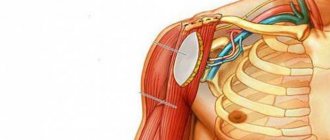Kinds
There are two forms of paralysis regarding its origin:
- central or spastic - a pathology associated with disorders in the nerve cells that provide muscle movement and increased tone of these muscles;
- peripheral or flaccid - a pathology associated with disorders in nerve cells, which led to a decrease in tone and muscle atrophy.
By area of localization (the so-called lack of muscle strength):
- monoplegia – paralysis of one limb;
- hemiplegia - paralysis in the limbs located on one side;
- paraplegia - paralysis only in the upper or lower extremities;
- tetraplegia – paralysis of all limbs.
Causes
The causes of paralysis are:
- acute disorder of spinal or cerebral circulation;
- spinal cord or brain injuries;
- neoplasms of the spinal cord or brain;
- abscess of the spinal cord or brain;
- inflammatory processes: myelitis or encephalitis;
- myelin breakdown (observed in multiple sclerosis, multiple encephalomyelitis);
- poisoning with nerve paralytic or industrial poisons, salts of heavy metals;
- immunoinflammatory diseases;
- myasthenia gravis – increased muscle fatigue;
- botulism – botulinum toxin poisoning;
- myopathy – a disorder of metabolic processes in muscles;
- epilepsy – dysfunction of the brain;
- motor neuron diseases.
Symptoms
Symptoms of paralysis are a complete lack of strength in a muscle or muscle group, which is expressed by:
- change in gait;
- foot drop when changing legs;
- hanging head on chest;
- sagging arms;
- weak or no compression;
- difficulties with independent movement;
- Symptoms of paralysis also include:
- impaired movements of the eyeballs, strabismus;
- moving both eyeballs to the side;
- speech problems;
- tongue prolapse.
Diagnostics
Symptoms of paralysis should be a reason to make an appointment with a neurologist. Diagnostic measures for paralysis include:
- analysis of patient complaints;
- neurological examination;
- blood test to detect inflammatory processes;
- toxicological blood test for poisoning;
- detection of myasthenia gravis by administering proserin;
- electroneuromyography – assessment of electrical activity of muscles;
- electroencephalography – assessment of the electrical activity of areas of the brain;
- CT scan of the brain;
- CT scan of the spinal cord;
- magnetic resonance angiography – assessment of the integrity and patency of the arteries of the brain.
If tumors or other neoplasms are detected, consultation with a neurosurgeon is necessary.
B.86. Central and peripheral paralysis
Paralysis is the absence of movement in a muscle or group of muscles as a result of interruption of the motor reflex pathway. Incomplete loss of movement (limitation of its volume and strength) is called paresis.
Depending on the prevalence of paralysis, there are monoplegia (paralysis of one limb), hemiplegia (paralysis of one half of the body), paraplegia (paralysis of both arms or legs), tetraplegia (paralysis of all four limbs).
When the peripheral motor neuron and its connections to the muscle (peripheral nerve) are damaged, peripheral paralysis occurs. When the central motor neuron and its connection with the peripheral neuron are damaged, central paralysis develops.
Clinical characteristics of central and peripheral paralysis
| Symptoms of paralysis | Central paralysis | Peripheral paralysis |
| muscle tone | elevated | demoted |
| reflexes | tendon reflexes are increased, abdominal reflexes are decreased or lost | tendon and skin reflexes are lost or reduced |
| pathological reflexes | available | none |
| friendly movements (syncinesis) | available | none |
| amyotrophy | absent | expressed |
| degeneration reaction | absent | available |
Central paralysis
Central paralysis occurs when the central motor neuron is damaged in any part of it (motor zone of the cerebral cortex, brain stem, spinal cord). A break in the pyramidal tract removes the influence of the cerebral cortex on the segmental reflex apparatus of the spinal cord; his own apparatus is disinhibited. In this regard, all the main signs of central paralysis are, in one way or another, associated with increased excitability of the peripheral segmental apparatus. The main signs of central paralysis are muscle hypertension, hyperreflexia, expansion of the zone of evoking reflexes, clonus of the feet and kneecaps, pathological reflexes, protective reflexes and pathological synkinesis.
With muscular hypertension, the muscles are tense and dense to the touch; Their resistance during passive movement is felt more at the beginning of the movement. Severe muscle hypertension leads to the development of contractures - a sharp limitation of active and passive movements in the joints, due to which the limbs can “freeze” in an incorrect position. Hyperreflexia is accompanied by an expansion of the zone of evocation of reflexes. Clonus of the feet, kneecaps and hands are rhythmic muscle contractions in response to stretching of the tendons. They are a consequence of a sharp increase in tendon reflexes. Foot clonus is caused by rapid dorsiflexion of the feet. In response to this, rhythmic twitching of the feet occurs. Sometimes foot clonus is also noted when inducing a reflex from the heel tendon. Patella clonus is caused by sudden downward abduction of the kneecap.
Pathological reflexes appear when the pyramidal tract is damaged at any of its levels.
The Babinski reflex is caused by line irritation of the foot closer to its outer edge. In this case, a fan-shaped spread of the fingers and extension of the thumb occurs (perverted plantar reflex). A distinct extension of the thumb and a fan-shaped spread of all other fingers occurs when the hand is vigorously drawn from top to bottom along the inner edge of the tibia (Oppenheim reflex), pressing on the calf muscle (Gordon reflex), squeezing the Achilles tendon (Schaeffer reflex). The listed pathological symptoms are the extensor group of pathological reflexes.
There are also flexion reflexes. When the flesh of the tips of the toes is abruptly struck, they bend (Rossolimo reflex). The same effect is observed when hitting the dorsum of the foot with a hammer in the area of the base of the II-IV toes (Bekhterev reflex) or in the middle of the sole at the base of the toes (Zhukovsky reflex).
Protective reflexes occur in response to pain or temperature stimulation of a paralyzed limb. At the same time, she involuntarily withdraws.
Synkinesias are involuntarily occurring friendly movements accompanied by active movements (for example, waving your arms while walking). With central paralysis, pathological synkinesis is observed. So, when the muscles of a healthy limb on the paralyzed side are tense, the arm is bent at the elbow and brought to the body, and the leg is extended.
Lesion of the pyramidal tract in the lateral column of the spinal cord causes central paralysis of the muscles below the level of the lesion. If the lesion is localized in the upper cervical segments of the spinal cord, then central hemiplegia develops, and if in the thoracic spinal cord, then central leg plegia.
Damage to the pyramidal tract in the region of the brain stem leads to central hemiplegia on the opposite side. At the same time, the nuclei or roots of the cranial nerves may be affected. In this case, cross syndromes may occur: central hemiplegia on the opposite side and peripheral paralysis of the muscles of the tongue, face, and eyeball on the affected side. Cross syndromes make it possible to accurately determine the location of the lesion. Lesion of the pyramidal tract in the internal capsule is characterized by central hemiplegia on the opposite side with central paralysis of the muscles of the tongue and face on the same side. Damage to the anterior central gyrus most often leads to monoplegia on the opposite side.
Central paralysis of the facial muscles differs from peripheral paralysis observed with neuritis of the facial nerve or with crossed Millard-Gubler syndrome in that only the muscles of the lower half of the face are affected. The patient cannot extend his lips forward and grin his teeth on the affected side. His nasolabial fold is smoothed and the corner of his mouth is lowered. However, the forehead muscles remain intact, and the palpebral fissure closes completely. There are no lacrimation, hyperacusis (sound phobia, hypersensitivity to loud sounds) or taste disorders.
With central paralysis of the tongue muscles, tongue atrophy does not develop.
Peripheral paralysis
Peripheral paralysis is characterized by the following main symptoms: absence of reflexes or their decrease (hyporeflexia, areflexia), decrease or absence of muscle tone (atony or hypotonia), muscle atrophy. In addition, changes in electrical excitability, called the degeneration reaction, develop in paralyzed muscles and affected nerves. The depth of changes in electrical excitability allows one to judge the severity of the lesion in peripheral paralysis and the prognosis. Loss of reflexes and atony are explained by interruption of the reflex arc; such a break in the arc leads to loss of muscle tone. For the same reason, the corresponding reflex cannot be evoked. Muscle atrophy, or sudden weight loss, develops due to the disconnection of the muscle from the neurons of the spinal cord; from these neurons, impulses flow through the peripheral nerve to the muscle, stimulating normal metabolism in muscle tissue.
With peripheral paralysis, fibrillar twitching may be observed in atrophied muscles in the form of rapid contractions of individual muscle fibers or bundles of muscle fibers (fascicular twitching). They are observed in chronic progressive pathological processes in the cells of peripheral motor neurons.
Damage to a peripheral nerve leads to peripheral paralysis of the muscles innervated by this nerve. In this case, sensory disturbances and autonomic disorders are also observed in the same area, since the peripheral nerve is mixed - motor and sensory fibers pass through it.
As a result of damage to the anterior roots, peripheral paralysis of the muscles innervated by this root occurs.
Damage to the anterior horns of the spinal cord causes peripheral paralysis of the muscles in the areas of innervation by this segment.
Thus, damage to the anterior horns of the spinal cord in the area of the cervical thickening (the fifth - eighth cervical segments and the first thoracic) leads to peripheral paralysis of the arm. Damage to the anterior horns of the spinal cord at the level of the lumbar enlargement (all lumbar and first and second sacral segments) causes peripheral paralysis of the leg. If the cervical or lumbar thickening is affected on both sides, then upper or lower paraplegia develops.
An example of peripheral limb paralysis is the paralysis that occurs with polio, an acute infectious disease of the nervous system. With polio, paralysis of the legs, arms, and respiratory muscles can develop. When the cervical and thoracic segments of the spinal cord are affected, peripheral paralysis of the diaphragm and intercostal muscles is observed, leading to respiratory failure. Damage to the upper thickening of the spinal cord leads to peripheral paralysis of the arms, and the lower (lumbar thickening) leads to paralysis of the legs.
Treatment
Treatment of paralysis is aimed at treating the underlying disease that is the cause of the pathology.
If tumors of the spinal cord or brain are detected, surgical intervention is necessary: removal of the tumor, hemorrhage, or abscess.
To normalize blood pressure, nootropics and angioprotectors are prescribed - drugs to improve blood flow.
For infectious lesions of the brain, antibiotics are prescribed.
To treat botulism, anti-botulism serum is administered.
When myasthenia gravis is detected, drugs that improve neuromuscular conduction are prescribed.
In addition, the doctor prescribes vitamins, drugs to restore nerve tissue, and physical procedures to develop muscles.
Paralysis leads to more serious pathologies, including contractures (muscle hardening that cannot be treated) and ankylosis of the joints (their complete and irreversible immobility).
A completely paralyzed man was able to recover and began to walk again
A rare and truly wonderful event occurred in the Canadian town of Windsor, Ontario. 22-year-old Paul McCrary began to walk. The fact is that this nice guy, five years old, broke his neck while playing football at school. The whole country pitied him, and the doctors firmly said that he would never get back on his feet. The most he can achieve is that his fingers will move.
The guy was completely paralyzed from the neck down. However, as he says, there were still weak sensations in the body. The day after the injury and surgery, he felt the trainer’s touch on his foot and felt the warmth. Paul asked the coach if it was true what the doctors said. The mentor replied that Paul could recover if he really wanted to...
The young man was on a ventilator for a month. Then he was treated with medications that are given for such injuries, plus he worked out every day with a physiotherapist, all of this was paid for by the state and from a charity fund. But, as the physiotherapist says, “the main thing is not what you do with a specialist for an hour a day, but what you do for the remaining 23 hours.”
Paul McCrary worked on himself and did not listen to pessimists. He advises people who find themselves in his position to start by visualizing themselves as healthy and “visualizing” what you want to achieve. And then don’t listen to those who, even seeing your small successes, say that this is your “ceiling”; you will no longer achieve this. “People project their own insecurities onto you,” McCrary says.
Paul was greatly helped by the support of his family and friends.
Photo: SOCIAL NETWORKS
He spent most of the time from the injury until now in a wheelchair. When he was able to hold a felt-tip pen in his hands, a year after everything happened, Paul covered the walls with motivational phrases. For example: “Yesterday you promised: “Tomorrow.”
He doesn't say what kind of exercises he did, but by typing Paul McCrary on Youtube you can see his workouts in the gym. He also has a Facebook page. Now Paul can independently walk about 250 meters on crutches, he goes down and up stairs, he got a license to drive a car, went to university, and even moved out of his mother’s house and rented an apartment, leaving his mother’s wheelchair. He says that his feelings about gaining independence cannot be expressed in words. “I can drive everywhere alone, go wherever I want,” the young man rejoices.
His physical therapist says that many paralyzed people at first don’t believe that they will be bedridden or wheelchair-bound forever, and her patient didn’t believe it either, but not everyone has that kind of desire to live fully, that kind of will. The support of family and friends also played a significant role.
